Somewhere along the line we have lost sight of the humble shrub. Its downfall could be in part attributed to our continuing love for prairie planting, which subverted the quaint cottage garden with its weighty perennials, swaying grasses, and broad brushstrokes of ribboned colour. Against such seasonal vibrancy – purple salvia, beaming echinacea and tall persicaria – stiff and woody viburnums, weigelas and hydrangeas came to feel decidedly pedestrian, the stuff of municipal car parks and stale suburbia.
In appealing to this shift in tastes, many contemporary garden designers doubled down on herbaceous planting schemes, and our confidence in – and, seemingly, knowledge of – valuable ornamental shrubs began to wane. But under increasingly volatile weather patterns, our gardens are in desperate need of more dependable, deeper-rooted plant material, and the shrub – with its robust longevity – is ready for a rebrand.
In his foreword to the newly published Shrouded in Light, which explores naturalistic shrubs, Prof Nigel Dunnett, who teaches planting design at the University of Sheffield, says the word “shrub” lacks a certain sexiness. Shrubs fell out of fashion through the overuse of a small number of common, unremarkable species, he says, but they are a vital element of truly resilient plantings. “We should take inspiration from how they grow in the wild,” he says. “Our landscapes want to be woody.”
Indeed, as current tastes progress towards plantings more acutely reflective of “wild” environments, shrubs present a loose, “naturalistic” appeal, from the ground-covering habit of cistus and juniper to the informal structure of nandina and Fatsia polycarpa.
The benefits of integrating more shrubby material into our gardens are many: they are easy to grow and demand little upkeep; their permanence provides habitat and refuge for wildlife (their fruits and flowers provide forage, also); they are versatile in shape, height and site suitability, bringing structure to deep shade and full sun. Shrubs are an ally, too, in the face of our warming climate, better able to weather drought and deluge. Moreover, as outlined in Shrouded in Light, they are effective against greenhouse gases through carbon sequestration – something too often associated solely with trees.
So, it is time to refamiliarise yourself with the vast and varied world of shrubs, and find those best suited to your home patch. I have listed a favoured handful, ranging from evergreen to deciduous, flowering to purely foliage, and numbered from sunny down to shady conditions.
Choosing plants appropriate for your soil and site is all the more crucial with shrubs (the other way lies legginess, stagnation, occasionally death), and my advice is always to plant small, rather than for immediate effect: you’ll have better results and save copious watering.
Play with placement – shrubs needn’t be consigned to the back of the border – and good practice is to improve the planting hole with a little organic matter before soaking, planting, backfilling and firming your new plant in place.
Prune to remove dead and decayed branches to reduce size and to sculpt and, generally speaking, do this after flowering (or a safe distance from frosts). You’ll learn best from your mistakes: I left a trail of ungainly shapes in my wake as a beginner gardener, but nature straightens things out eventually; more important is to get stuck in.
10 useful shrubs (and where to buy them)
Osmanthus x burkwoodii
An oldie but a goodie, this large, dense and unfussy evergreen shrub ranks among the most reliable of all. In late winter, it sparkles with heavily scented blooms, which contrast beautifully with its dark green foliage.
bethchatto.co.uk
Chasteberry (Vitex agnus-castus)
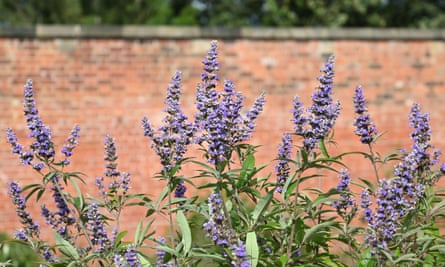
I fell in love with the lilac blue-flowered chasteberry (or chaste tree), with its slender blooms somewhere between a buddleia and a salvia, when I saw it growing loose and free on hillsides in central Sardinia. Its leaves are deciduous, and its blooms are attractive to pollinators.
burncoose.co.ukk

When it comes to scent, mahonias are among the headiest – and earliest – shrubs to perfume the spring air. ‘Soft Caress’ throws in the added benefit of alluringly elegant, feathery foliage. One for a shady spot where other plants struggle.
paramountplants.co.uk
Blue juniper (Juniperus ‘Grey Owl’ )
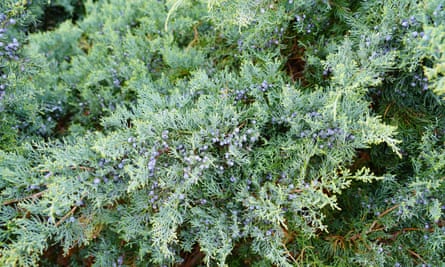
How I adore this plant: tough, aromatic and gorgeously glaucous in colour. ‘Grey Owl’ has the prostrate, ground-covering tendencies typical of many junipers, yet rises to form a dynamic mound. Easy company beside Mediterranean-type species in full sun or part shade.
paramountplants.co.uk
Sweet box (Sarcococca ruscifolia)
after newsletter promotion

No list of high-performing shrubs would be complete without a sarcococca: plant them in little groupings, and their powerful spring perfume will stop you in your tracks. Deep evergreen foliage continues through summer. Try the award-winning ruscifolia cultivar ‘Dragon Gate’.
burncoose.co.uk
Tree lupin (Lupinus arboreus)

A sun-loving Californian, the woody lupin has naturalised in parts of coastal England. Its shimmering evergreen leaves, lemon-yellow flowers and delightfully informal composition make it an excellent addition to a bright, free-draining border or gravel garden.
victoriananursery.co.uk
Fatsia polycarpa ‘Green Fingers’
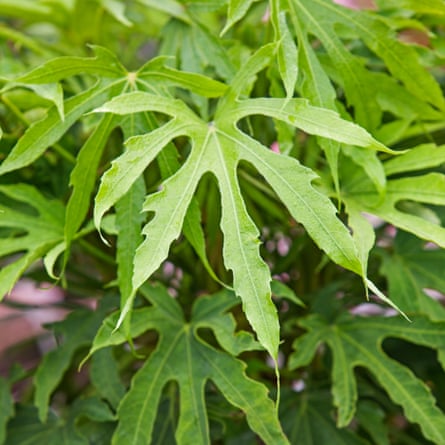
With leaves that are more roughly textured than those of the better known Fatsia japonica, F. polycarpa forms a large thicket of stems that provide a green screen for foreground plants. The most shade-tolerant shrub on this list, it has large flowers that light up the gloom.
bethchatto.co.uk
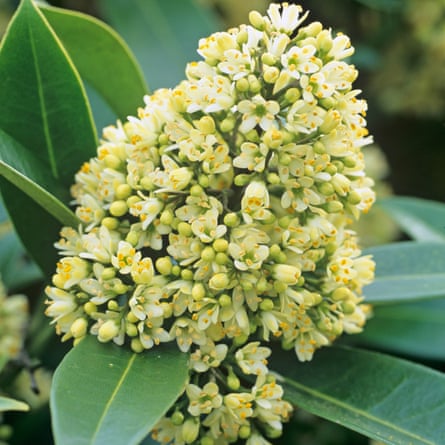
Another old-timer, ‘Kew Green’ is the skimmia’s premier cultivar, and is reliably durable in either deep or partial shade, and whether planted in a border or a window box. The prolific, nectar-rich acid-green flowers provide a soft natural canvas for larger plants.
crocus.co.uk
Thornless bramble (Rubus lineatus)
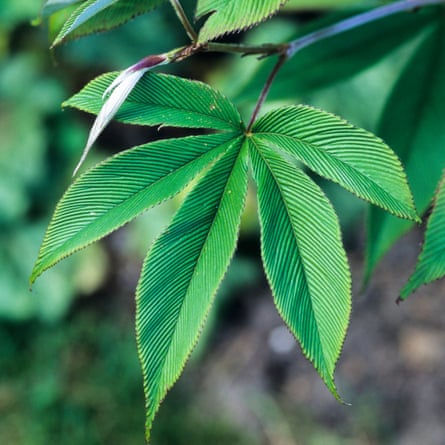
This medium-sized rubus is an airy shrub that reaches well over a metre tall. Underused, its smooth palmate leaves – which emerge showing their bright creamy white undersides – are irresistible to the touch.
crug-farm.co.uk
Mountain holly (Olearia macrodonta)
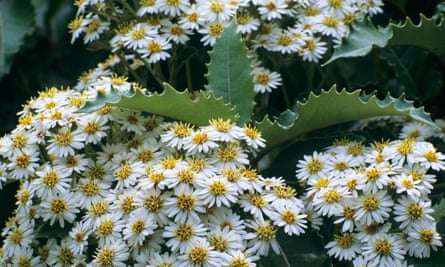
Olearia remains my go-to for adding evergreen structure into a sunny planting scheme. The blue-green, holly-like leaves are a perfect contrast to its dusky stems and abundantly clustered, brilliant white summer flowers. Prune every few years to keep in check.
emeraldplants.co.uk
